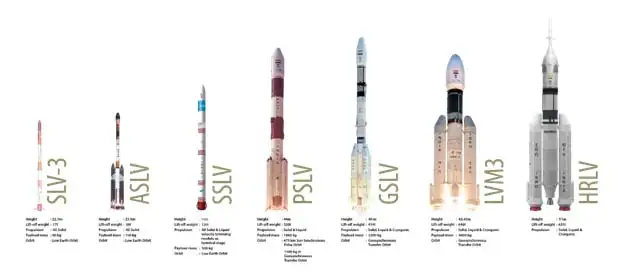
A launch vehicle (often referred to as a rocket) is a type of vehicle designed to propel payloads (such as satellites, spacecraft, scientific instruments, or cargo) into space. These vehicles are specially engineered to overcome Earth’s gravity and deliver their payloads into orbit or further into space.
Key Components of a Launch Vehicle:
- Rocket Stages:
- A launch vehicle typically has multiple stages, with each stage containing its own propulsion system. As one stage finishes its burn (exhausting its fuel), it is discarded, and the next stage ignites to continue the ascent.
- Stages: The first stage provides the most thrust to overcome gravity, while higher stages provide the necessary velocity to reach orbit or beyond.
- Payload:
- This is the cargo the launch vehicle is carrying, such as satellites, probes, or human-crewed spacecraft. The payload is placed on top of the launch vehicle.
- Propellant:
- The fuel used to propel the rocket. It can be liquid (liquid hydrogen and liquid oxygen) or solid (such as solid propellant in smaller rockets). The propellant burns in the rocket engines to produce thrust.
- Rocket Engines:
- Engines that expel gas at high speed to produce thrust, according to Newton’s third law of motion. These engines can be powered by liquid fuel, solid fuel, or a combination.
Types of Launch Vehicles:
- Orbital Launch Vehicles:
- These rockets are designed to reach the velocity required to place a payload into orbit around Earth or send it on a trajectory toward another celestial body.
- Examples: Falcon 9 (SpaceX), Atlas V (United Launch Alliance), Soyuz (Russia).
- Suborbital Launch Vehicles:
- These vehicles are used to reach space but not stay in orbit. They typically reach the edge of space and then fall back to Earth.
- Examples: Blue Origin’s New Shepard, Virgin Galactic’s SpaceShipTwo.
- Heavy-Lift Launch Vehicles:
- These are designed to carry large payloads, such as satellites or interplanetary probes, into space.
- Examples: Saturn V (Apollo program), SpaceX’s Starship (future heavy-lift).
- Small Satellite Launch Vehicles:
- Smaller rockets designed to launch small satellites into orbit.
- Examples: Electron (Rocket Lab), LauncherOne (Virgin Orbit).
Functions and Uses:
- Satellite Deployment: Launch vehicles are used to place satellites into specific orbits, such as low Earth orbit (LEO), geostationary orbit (GEO), or polar orbit.
- Space Exploration: They carry probes, landers, or crewed spacecraft for missions to the Moon, Mars, or beyond.
- Cargo Delivery: Launch vehicles can be used to deliver supplies to space stations like the International Space Station (ISS).
- Research and Science: They are used to launch scientific instruments or experimental payloads into space for research purposes.
Examples of Famous Launch Vehicles:
- Saturn V: Used during NASA’s Apollo missions to land humans on the Moon.
- Space Shuttle: A reusable spacecraft that launched on a rocket, used for various missions, including deploying satellites and constructing the ISS.
- Falcon 9: A modern, partially reusable rocket by SpaceX that launches commercial payloads, including satellites and cargo to the ISS.
In summary, a launch vehicle is a critical part of space missions, providing the necessary propulsion to send objects from Earth’s surface into space.




